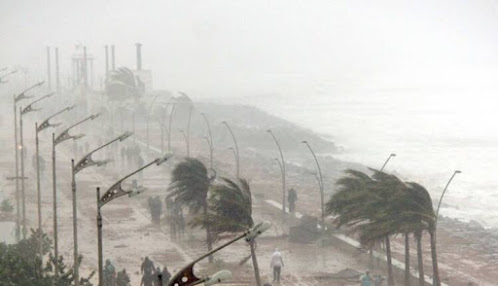INTRODUCTION OF BASIC CONCEPTS OF DISASTER MANAGEMENT
Terminology related to Disaster:
Hazard: “Physical impact of disturbance and occurrence of event”.
Risk: “Is the probability that loss will occur as the result of an adverse event, given the hazard and the vulnerability”.
Risk (R) can be determined as a product of hazard (H) and vulnerability (V)
i.e. R = H x V
Vulnerability: “Is the extent to which a community’s structure, services or environment is likely to be damaged or disrupted by the impact of a hazard”.
Disaster: “It is a natural or human-caused event which causes intensive negative impacts on people, goods, services and/or the environment, exceeding the affected community’s capability to respond”.
A disaster is a situation in which the community is incapable of coping. It is a natural or human-caused event which causes intense negative impacts on people, goods, services and the environment, exceeding the affected community’s capability to respond; therefore the community seeks the assistance of government and international agencies.
Effect of Disaster:
- Disaster affects the normal life of society.
- Damage to infrastructure.
- Psychological effects.
DISASTER MANAGEMENT CYCLE
Mitigation: Measures put in place to minimize the results from a disaster.
Examples: building codes and zoning; vulnerability analyses; public education.
Preparedness: Planning how to respond. Examples: preparedness plans; emergency exercises/training; SOPs and pre rehearsed drills, capacity building, warning systems, etc.
Response: Initial actions taken as the event takes place. It involves efforts to minimize the hazards created by a disaster. Examples: evacuation; search and rescue; emergency relief.
Recovery: Returning the community to normal. Ideally, the affected area should be put in a condition equal to or better than it was before the disaster took place. Examples: temporary housing; grants; medical care.
Types of Disaster:
There are two types of disaster
- Natural disaster
- Man made disaster
Natural Disasters
These types of disaster occur naturally and pose a threat to, people, structures or economic assets. They are caused by biological, geological, seismic, hydrological, or meteorological conditions or processes in the natural environment (e.g., cyclones, earthquakes, tsunami, floods, landslides, and volcanic eruptions).
Earthquake
An earthquake is a trembling or shaking movement of the earth’s surface, resulting from plate movements along a fault-plane or as a result of volcanic activity. Earthquakes can strike suddenly, violently, and without warning at any time of the day or night. The following terminologies are associated with earthquakes: epicenter, fault, magnitude and seismic waves.
Tsunami
A tsunami is an ocean wave generated by a submarine earthquake, volcano or landslide. It is also known as a seismic sea wave, and incorrectly as a tidal wave. The tsunami arrives at the coastal area with high speed and destroy the infrastructure on large scale.
Flood
This phenomenon occurs when water covers previously dry areas, i.e., when large amounts of water flow from a source such as a river or a broken pipe onto a previously dry area, or when water overflows banks or barriers.
Cyclones
Cyclones develop when a warm ocean gives rise to hot air, which in turn creates convectional air currents. Cyclones occur when the conventional air currents are being displaced.
Landslide
The term landslide refers to the downward movement of masses of rock and soil. Landslide hazard areas occur where the land has certain characteristics which contribute to the risk of the downhill movement of material.
Man-Made Disaster
Disasters caused by human actions, deliberate or otherwise. Apart from “technological disasters” this mainly involves situations in which civilian populations suffer casualties, losses of property. Like terrorist attack, train accident etc.
To be continued.











Very informative
ReplyDelete